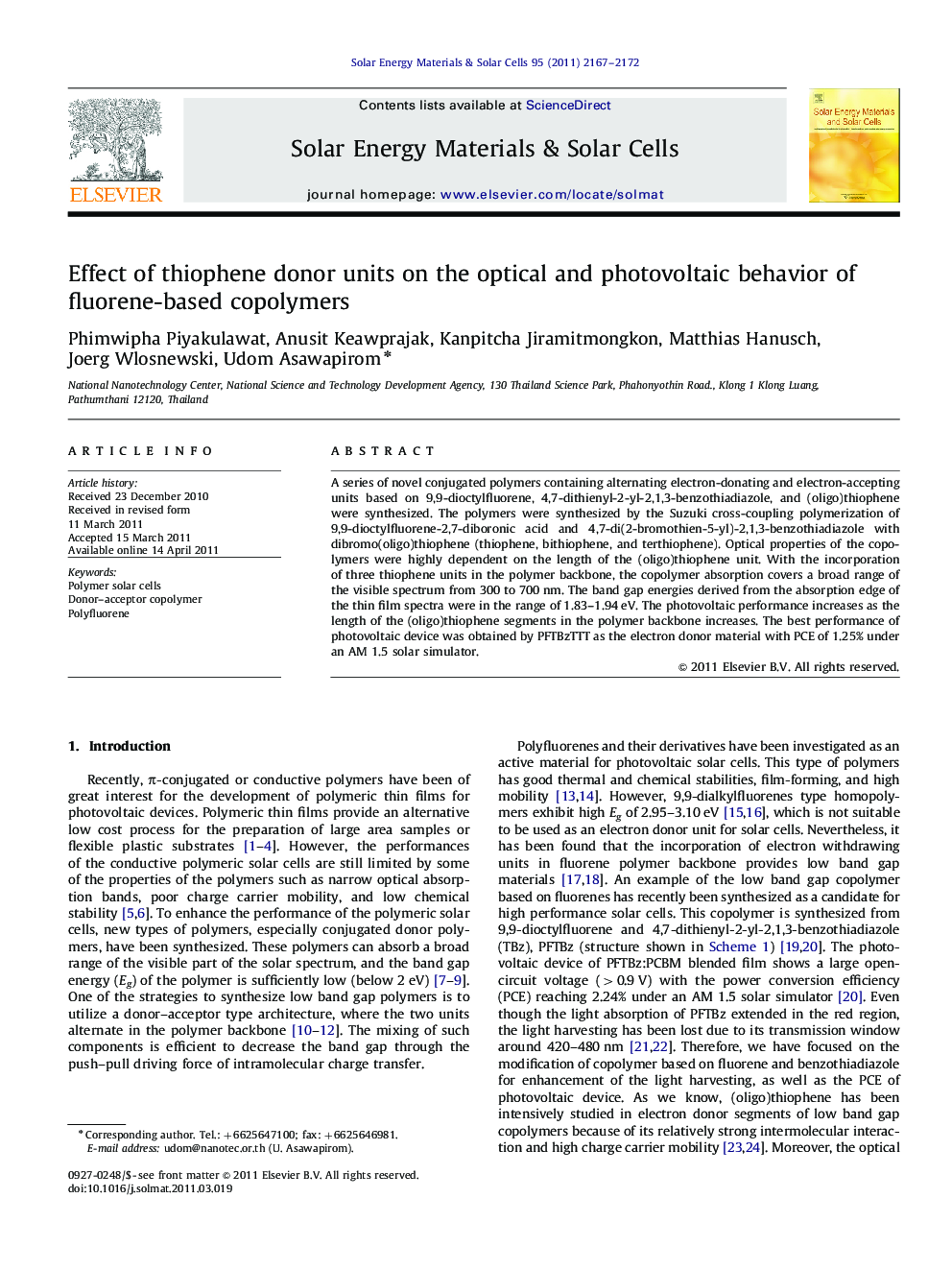| Article ID | Journal | Published Year | Pages | File Type |
|---|---|---|---|---|
| 78763 | Solar Energy Materials and Solar Cells | 2011 | 6 Pages |
A series of novel conjugated polymers containing alternating electron-donating and electron-accepting units based on 9,9-dioctylfluorene, 4,7-dithienyl-2-yl-2,1,3-benzothiadiazole, and (oligo)thiophene were synthesized. The polymers were synthesized by the Suzuki cross-coupling polymerization of 9,9-dioctylfluorene-2,7-diboronic acid and 4,7-di(2-bromothien-5-yl)-2,1,3-benzothiadiazole with dibromo(oligo)thiophene (thiophene, bithiophene, and terthiophene). Optical properties of the copolymers were highly dependent on the length of the (oligo)thiophene unit. With the incorporation of three thiophene units in the polymer backbone, the copolymer absorption covers a broad range of the visible spectrum from 300 to 700 nm. The band gap energies derived from the absorption edge of the thin film spectra were in the range of 1.83–1.94 eV. The photovoltaic performance increases as the length of the (oligo)thiophene segments in the polymer backbone increases. The best performance of photovoltaic device was obtained by PFTBzTTT as the electron donor material with PCE of 1.25% under an AM 1.5 solar simulator.
Graphical abstractFigure optionsDownload full-size imageDownload as PowerPoint slideHighlights► Novel copolymers based on fluorene, dithienylbenzothiadiazole, and oligothiophene. ► Properties of the polymers were highly dependent on the length of the oligothiophene. ► The transmission window of low band gap polymer can be enhanced by incorporation of terthiophene. ► Increasing oligothiophene units will increase photons harvesting and, cell performance.
